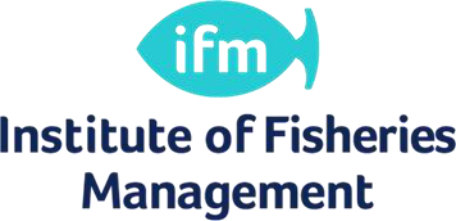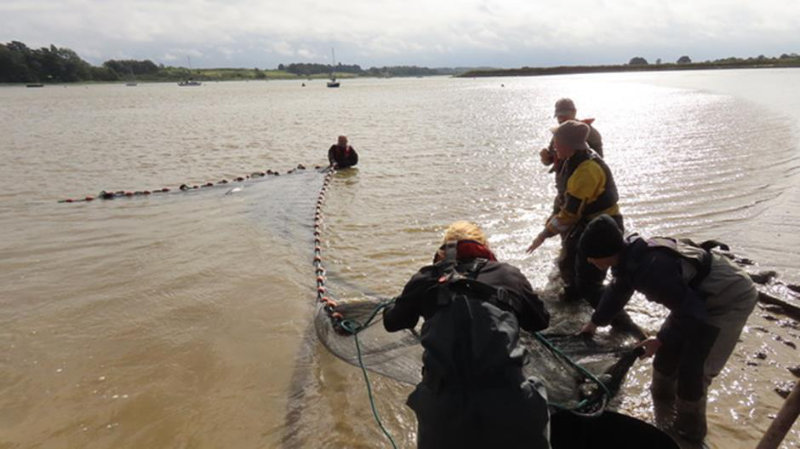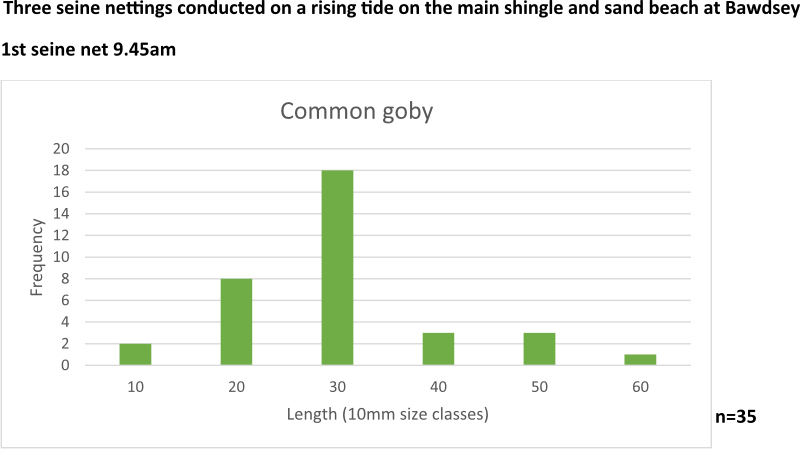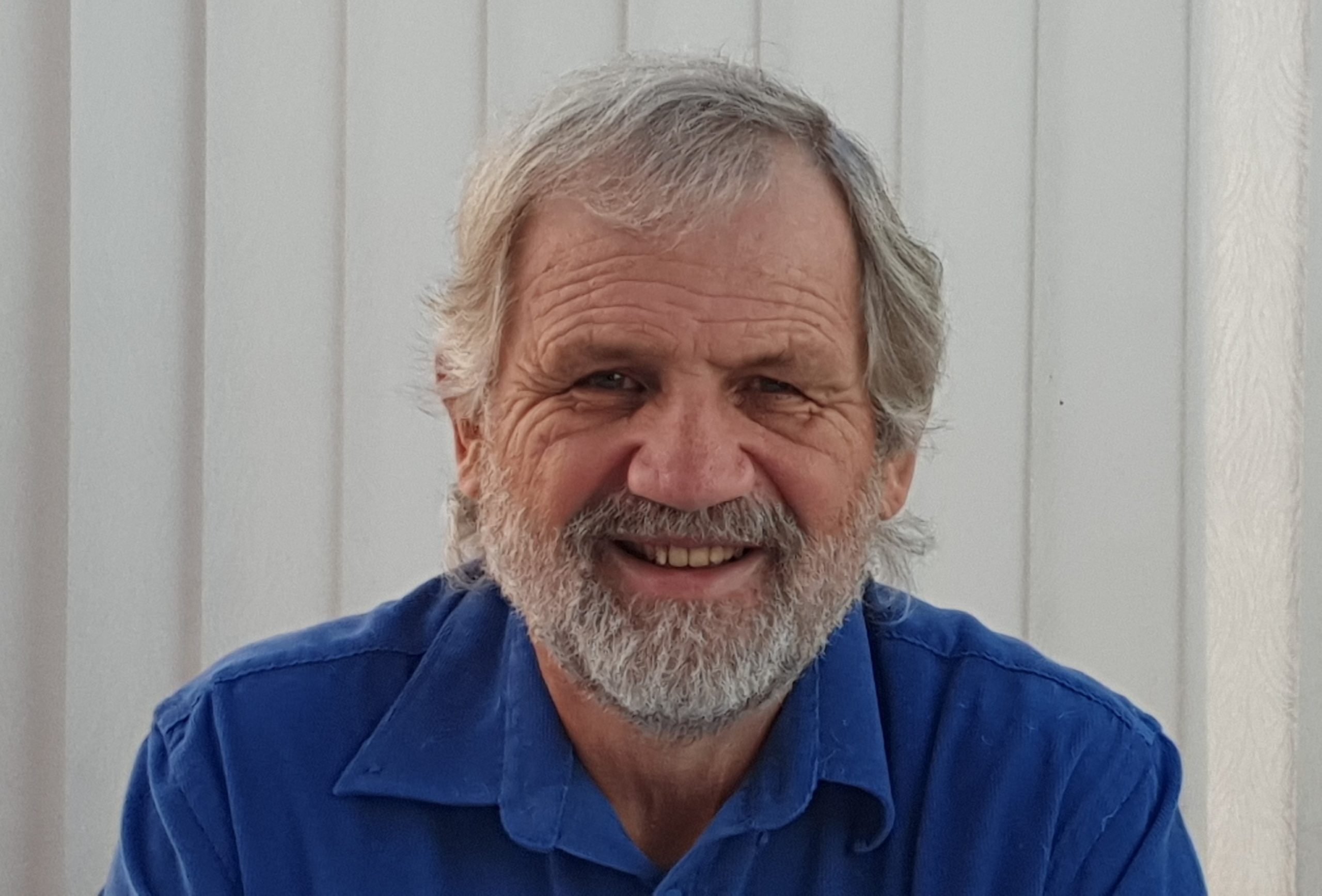Report from the Second Fish Survey conducted by the RDA and the Institute of Fisheries Management September 2023
by Steve Colcough
A small group of RDA volunteers, led by Richard Verrill, have been working together with Steve Colcough from the Institute of Fisheries Management and others to collect up to date information about fish stocks in the Deben. RDA Journal readers will remember Richard’s report from August 2022 – Deben Fish Survey 2022

Now, following a second sampling session from higher up the river, Steve Colcough has produced a formal report available here — River Deben fish surveys 2023.
This is his summary of progress to date.
Summary
Estuaries are extremely productive environments, playing a crucial part in the life cycle of many fish species, acting as both key marine fish nursery grounds and as vital corridors for migratory species. These are highly dynamic environments, with abrupt changes in oxygen concentration, temperature, turbidity and salinity applying over both the short term and over longer seasonal cycles. The intertidal areas and saltmarsh of the estuarine fringes are vitally important refuge and feeding habitats for fish fry. Saltmarshes exist as a natural component of the estuarine system in the more saline reaches, extending as a band of higher plants on the foreshore between mean high water neap tide level and the mean highwater mark.
The fish communities in estuaries were not well studied in the UK prior to the millennium. The advent of the Water Framework Directive UK regulations in 2003 required an assessment of ecological status of estuaries, including an assessment of the fish life present, for the first time. Even so only one third of UK estuaries have ever been sampled formally to examine the fish life present. The EA has not conducted a full WFD fish survey in the Deben to date. In 2013 & 2014, Eastern IFCA conducted a small fish survey in the estuary at a number of sites using the WFD specification 43m seine net. The author has conducted small scale fish surveys for specific purposes at both Wood bridge in 2007 and Waldringfield in 2016.

The River Deben Association (RDA) are keen to develop a citizen science-based fish survey programme at in the Deben estuary. Through an initial dialogue with Eastern IFCA, the author (acting through the Institute of Fisheries Management) agreed to deliver an initial survey with staffing support from the RDA. A site at Bawdsey was fished with a 15m seine deployed from the shore on August 16th 2022 (Colclough, 2022).
Given the success of this venture, the RDA were keen to attempt to repeat and extend the survey programme in 2023. Two sites were selected, the original one at Bawdsey plus a further site in the middle reaches at Martlesham Creek. The survey was delivered as before with technical support and equipment from the IFM (Steve Colclough & Tanya Ferry) and staffing by citizen scientists. This year the base was much broader with active field support from members of the RDA and members of the Alde/Ore Association together with staff from Suffolk Wildlife Trust, Cefas and Eastern IFCA. Since the 2022 survey, the IFM citizen science process is now funded in part by Natural England as part of a wider government backed trial to assess how citizen science might assist in delivery the marine Natural Capital Ecosystem Assessment project. Natural England are cognisant of the social benefits arising from citizen science engagement as much as the scientific benefits. The Bawdsey survey was conducted on September 19th, 2023 and the Martlesham Creek survey on the following day.
This report describes the findings of the 2023 survey and contrasts these with those arising from previous works. Sufficient material from the 2022 report is provided to provide a full background for the new reader. For further information, please consult the 2022 survey report (Colclough, 2022).
It remains clear that Deben estuary and its associated saltmarshes form an important nursery ground for a range of marine fish species today and the survey findings demonstrate the functioning of these resources as Essential Fish Habitat.

The Bawdsey site data demonstrates how dynamic marine and estuarine fish communities can be. Even though there are significant and predictable seasonal cycles in the behaviour of these species, sampling at similar times of year in the same locations does not necessarily mean that the communities reported are indeed similar. Each survey is no more than a snapshot in time, driven by the specific forcing factors (e.g. salinity, temperature etc.) applying at that time. However, the 2023 survey results are still generally consistent with what has been reported from the lower reaches of other estuaries in the South East in recent years. One notable feature of the Bawdsey survey was the presence of juvenile herring and some evidence of recent spawning.
The Martlesham Creek results are entirely consistent with the type of communities found in the middle reaches of estuaries in the South East of England and agree with past findings by the author at other sites in the middle reaches of the Deben estuary in past years.
The difference between the communities at Bawdsey and Martlesham Creek demonstrate how salinity is a prime driver of fish distribution in estuaries and demonstrates the value of extending the survey programme to at least two very different sites.
The 2023 survey demonstrated once again the scientific value of such efforts, helping fill in some of the data gaps where other parties do not have the resources to investigate. Working alongside other bodies, citizen science going forward can prove to be a critical and supportive element in a more holistic understanding of our inshore coastal and estuarine waters, leading to more informed management strategies.
The RDA are keen to develop a long term fish survey programme in the estuary. With continuing support from Natural England, the IFM can hopefully continue to support the RDAs with this vision
Steve Colcough

I spent 35 yrs in the water industry as a fisheries officer and scientist between 1976 and 2011, first in Thames Water Authority, then after privatisation in 1989 in the National Rivers Authority and then after 1995 in its successor the Environment Agency (EA). Originally involved in freshwater fisheries, after promotion to a management role in 1985 in an office at Abbey Wood on the banks of the tidal Thames, I became increasingly involved in the ecology and management of fish stocks in the Thames estuary. We developed a new biannual muti-method fish survey programme in the estuary in 1993. In 2000, that survey was identified as European Best Practice in a research programme identifying new challenges brought about by the Water Framework Directive. From that point until my leaving the EA in 2011, I ran a specialist national team that developed the sampling protocols for fish sampling in estuaries to meet those WFD demands and trained up other area teams across the EA to deliver these surveys. I also acted as a national advisor to other EA staff when a development challenge in estuarine waters came up e.g. new port development, power station etc. What became clear very early on is that very few scientists across northern Europe had ever attempted to study fish ecology in estuaries to this standard before. By 2005, we were leading an EU Atlantic coast international intercalibration group trying to harmonise WFD methods across Europe. During my later years in the EA, I also started to study fish ecology in other intertidal areas such as saltmarshes and artificially created habitats such as intertidal terraces and managed realignments. Again,it soon became clear that very few have studied such ecology in Europe. I remain an international expert in these fields to this day. Not something I ever sought, just very few others involved!
I left the EA in 2011 and set up a small independent fisheries consultancy. In semi-retirement since 2016,I continue to do some consultancy work. I have also been a keen member of the Institute of Fisheries Management (IFM) since my career began. As I left the EA, I was invited to set up a specialist section of the IFM to focus on estuarine and marine environments. With a passion to encourage others to take up my rarefied field we have helped support IFCAs, EA and many other groups with technical support and training in intertidal fish surveys . In the last few years, this work has really built up, particularly with interest from groups such as the RDA , Wildlife Trusts and others. Intertidal areas are twice as productive as their subtidal equivalents and act as critically important fish nurseries for species such as sea bass, grey mullets and others. If we do not understand these habitats, we cannot protect and promote them. We have lost 80% of our intertidal habitats across Europe over the past two centuries through land claim. With future sea level rises, there is huge potential to create large new intertidal areas, which if designed correctly can be vitally important fish nurseries, as well performing other important functions such as carbon sequestration (10 times as efficient as new woodland) and nutrient stripping, as well as flood risk management.
Citizen science surveys such as the work we have pioneered with the RDA help fill in some of the monitoring gaps left by the various regulators. CS data can and does make a real difference to more sustainable management of the whole aquatic system. Our CS work with bodies such as the RDA has been part funded by Natural England for the past two years. This has been a trial to explore how CS surveys providing scientific data (as well social benefits for those engaging) can make a real contribution to a broader Defra led process named Natural Capital Ecosystem Assessment. I am very sure with the excellent support of bodies such as the RDA, this can be clearly demonstrated. If we successful in our work, such surveys may become routine one day, with the prospect of secure funding to assist the work.
Finally, in semi-retirement I have another “fishy” passion…. the sturgeon. I have spent 20yrs amassing historical records on sturgeon in Great Britain. The IFM now forms part of the UK Sturgeon Conservation Alliance and we work closely with continental experts who are restoring sturgeon to rivers across the face of Europe. Our data has proven clearly that sturgeon are native to this country, even if now long gone. Adolescent examples from France and Germany are now turning up in our coastal waters. We are working over the longer term towards restoration in Great Britain England at some point in the future. There are no historic records from the Deben, but plenty from the Thames, Blackwater, Stour, Norfolk Broads and a lot from off the East Coast more generally. There is no reason why your readers might not hear about one locally in the coming years. If they do, please tell me or contact our website savethesturgeon.com
